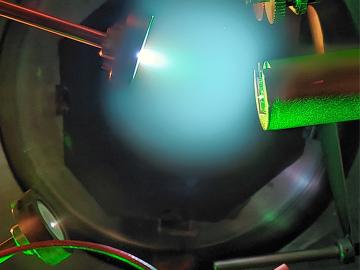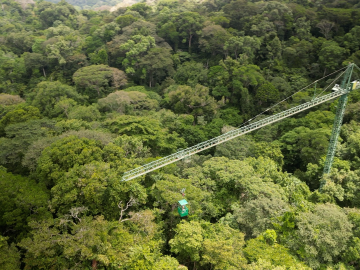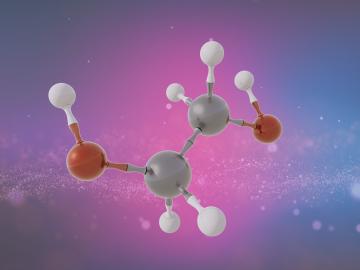
Filter News
Area of Research
- Advanced Manufacturing (3)
- Biology and Environment (42)
- Building Technologies (1)
- Computational Biology (1)
- Computational Engineering (3)
- Computer Science (15)
- Electricity and Smart Grid (1)
- Energy Science (57)
- Functional Materials for Energy (1)
- Fusion and Fission (5)
- Fusion Energy (8)
- Isotopes (11)
- Materials (30)
- Materials for Computing (6)
- Mathematics (1)
- National Security (20)
- Neutron Science (18)
- Nuclear Science and Technology (10)
- Nuclear Systems Modeling, Simulation and Validation (1)
- Quantum information Science (5)
- Supercomputing (63)
News Type
News Topics
- (-) Advanced Reactors (27)
- (-) Artificial Intelligence (62)
- (-) Biomedical (32)
- (-) Computer Science (121)
- (-) Environment (99)
- (-) Isotopes (29)
- (-) National Security (26)
- 3-D Printing/Advanced Manufacturing (93)
- Big Data (34)
- Bioenergy (46)
- Biology (51)
- Biotechnology (16)
- Buildings (43)
- Chemical Sciences (57)
- Clean Water (16)
- Composites (25)
- Coronavirus (28)
- Critical Materials (23)
- Cybersecurity (21)
- Education (3)
- Element Discovery (1)
- Emergency (2)
- Energy Storage (80)
- Exascale Computing (24)
- Fossil Energy (2)
- Frontier (25)
- Fusion (28)
- Grid (43)
- High-Performance Computing (58)
- Hydropower (6)
- Irradiation (3)
- ITER (6)
- Machine Learning (31)
- Materials (107)
- Materials Science (94)
- Mathematics (3)
- Mercury (5)
- Microelectronics (1)
- Microscopy (31)
- Molten Salt (8)
- Nanotechnology (44)
- Neutron Science (88)
- Nuclear Energy (55)
- Partnerships (36)
- Physics (31)
- Polymers (24)
- Quantum Computing (21)
- Quantum Science (46)
- Security (13)
- Simulation (24)
- Software (1)
- Space Exploration (13)
- Statistics (2)
- Summit (32)
- Transportation (73)
Media Contacts

In a game-changing study, ORNL scientists developed a deep learning model — a type of artificial intelligence that mimics human brain function — to analyze high-speed videos of plasma plumes during a process called pulsed laser deposition.

Scientists using high-resolution aerial scans and computational modeling concluded that wildfires, storms and selective logging have become key drivers behind rainforest carbon emissions, outpacing clear-cutting practices.

A team led by scientists at ORNL identified and demonstrated a method to process a plant-based material called nanocellulose that reduced energy needs by a whopping 21%, using simulations on the lab’s supercomputers and follow-on analysis.

A research scientist with the Department of Energy’s Oak Ridge National Laboratory, Ayana Ghosh was named the 2024 Early Discovery Award winner by the American Ceramic Society. The award recognizes an early career member of the organization who has contributed to basic science in the field of glass and ceramics.

DOE commissioned a neutron imaging instrument, VENUS, at the Spallation Neutron Source in July. VENUS instrument scientists will use AI to deliver 3D models to researchers in half the time it typically takes.

Mohamad Zineddin, a distinguished researcher in nuclear and radiological engineering, recently received the Roger Howsley Award for Excellence in Nuclear Security.

A study by more than a dozen scientists at the Department of Energy’s Oak Ridge National Laboratory examines potential strategies to integrate quantum computing with the world’s most powerful supercomputing systems in the pursuit of science.

Benjamin Manard, an analytical chemist in the Chemical Sciences Division of the Department of Energy’s Oak Ridge National Laboratory, will receive the 2024 Lester W. Strock Award from the Society of Applied Spectroscopy.

Prasanna Balaprakash, director of AI programs at the Department of Energy’s Oak Ridge National Laboratory, has been appointed to Tennessee’s Artificial Intelligence Advisory Council.

A research team led by the Department of Energy’s Oak Ridge National Laboratory demonstrated an effective and reliable new way to identify and quantify polyethylene glycols in various samples.


